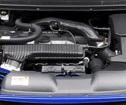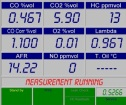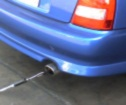// Our Smog Check Services //
Explore Our Smog Check Services

Smog Check for a 2000 or Later Vehicle
The majority of vehicles on the road in California are made after the year 2000. As of 2015, the state only requires that vehicles 2000 model year or later be tested using the Onboard Diagnostic System of OBDII. It's possible to have a vehicle made on or after the year 2000 in 15 to 30 minutes.
The steps of an OBDII Smog Check are:
Physical Inspection
OBDII Smog Test
Certificate Transmitted to the Sate for vehicles that pass testing.
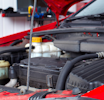
Smog Check for a 1999-1996 Vehicle
Model years prior to 2000 may require a more rigourous test. Since the ODBII standard was not formalized until 2000, the vehicle must be manually inspected. Testing is done on different equipment. Not all smog shops can smog check a vehicle of this age. If you have a vehicle model years 1999-96, Woodland Hills Smog has the equipment and training to smog check your vehicle.
Physical Inspection
Functional Inspection, (possibly OBDII if available)
Acceleration Simulation Mode (ASM) inspection and possibly a tail pipe inspection
Certificate if your vehicle passes.
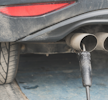
Smog Check for a 1995 or Earlier Vehicle
In addtion to the tests run on a 1999-96 vehicle a 1995 and earlier vehcile may need to have an EVAP test done. The test looks for holes or leaks in the Evaporative Emissions Control System (EVAP), which manages and stores fuel vapors to prevent them from escaping into the air. As with 1999-96 vehicles, Woodland Hills Smog is able to test vehciles in this model year range.
Physical Inspection
Funcitonal Inspection possibly including an EVAP Test
Certification sent to the DMV if your car passes.
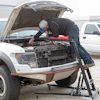
Heavy Duty, Specialty and Larger Vehicles
Heavy-Duty, Sport or Specialty Cars, and Recreational Vehicles of any model year take additional time to run a smog check. This is because in many cases parts such as a cover assembly may need to be removed in order to physically inspect the vehicle. Large vehicles also require additional time to conduct the physical inspection and test due to their size.
Physical Inspection
Emissions test appropriate for model year
Certificate transmittal to the DMV for vehicles that pass.
